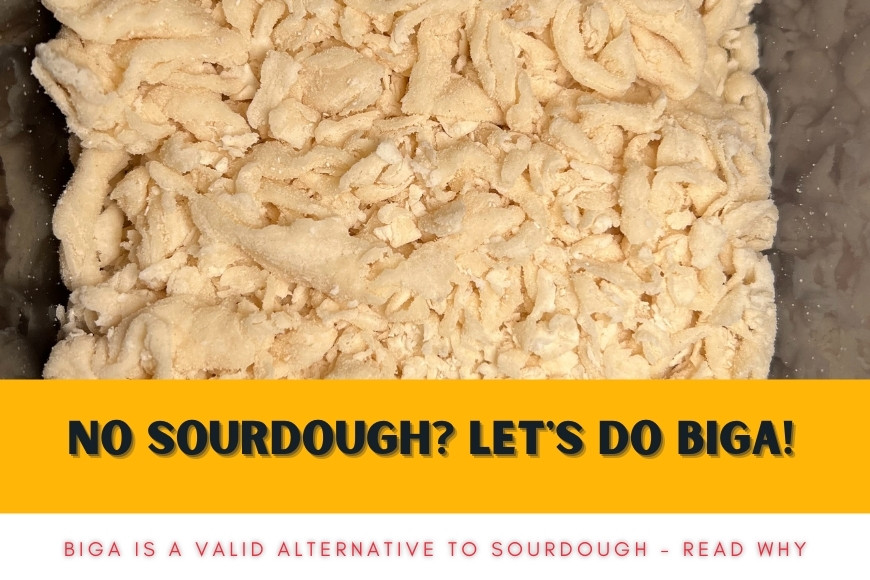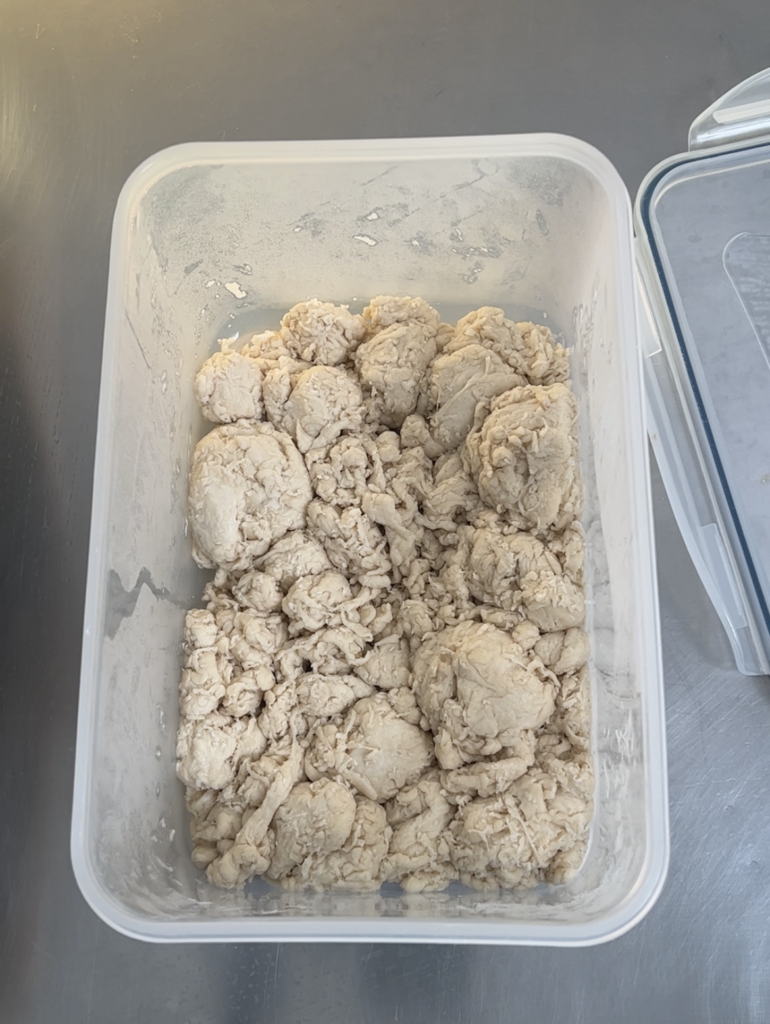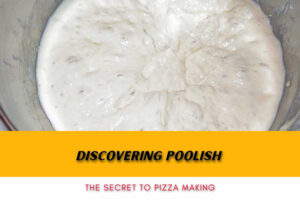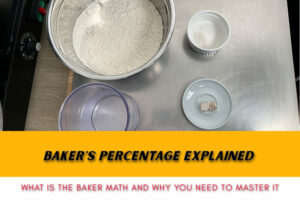
No Sourdough? Let’s do Biga!
Last updated on November 12th, 2023 at 07:11 pm
Sometimes you really have no time or willingness to manage a sourdough, I understand. If so, I have an alternative for you. It will bring some of the sourdough advantages but will be faster and easier. I am talking about a preferment called Biga! So if you have no Sourdough, let’s do Biga!
Before going into the topic details, I need to clarify that stiff sourdough starter is still unique. The flavors, smell and longer shelf-time that it brings is pretty different. However with biga we can have some of the advantages of a stiff sourdough without the recurrent efforts of managing sourdough. Especially from the point of view of the taste and flavors. Let alone that biga pizza dough will make easier to make a fluffy pizza. And the good news is that you don’t need to maintain biga, you simply do it when you need it!
This article is a preparatory one. I will introduce you to this wonderful preferment. In this way, when it’s time to put our hands in it, you are very well aware of what is coming, what you need and how to manage it. And no worries, my next article will cover what is missing here.
Here is the list of topics we will discuss:
- No Sourdough? Let’s do biga! (What is biga?)
- The classic Italian Biga Giorilli
- What is biga pizza dough?
- What is the advantage of using biga?
- Biga vs Poolish
No Sourdough, Let’s do Biga! (What is biga?)
Let’s start with an answer to the question what is biga. I admit that for someone can be very confusing. If we want to stay academic I can tell you that is a preferment. But then another question arises: what is a preferment?
Using Wikipedia will not help that much finding the answer. Or at least to me was confusing. In fact I find weird that Wikipedia explains the pre-ferment starting the article with the word about “ferment”.
So, let’s make it simple.
When creating a dough we have two mixing methods: direct and indirect
When you create a dough (can be for bread or for pizza, it applies to both) you have two mixing methods: direct and indirect. The first one consists in mixing all ingredients together – following of course the right order – to create the dough. The indirect method consists of preparing an initial “dough” that uses only few ingredients called indeed pre-ferment. You let the preferment develop (or ferment) for a certain amount of hours and then you mix it with the remaining ingredients of the recipe you want to create. Why you want to complicate a pizza recipe this way? Well, keep reading..
In Italian pizza world we mainly use two preferments: biga and poolish. Even though the most used is definitely the first.
Biga is a typical Italian preferment initially used for bread. In fact biga bread baking is still very common. The original version of the biga was tuned and defined by a very famous bread artisan and master baker: Piergiorgio Giorilli. His way of doing Biga is nowadays considered a standard. In fact we often say that we do the “Giorilli’s Biga“. When you say that to an Italian baker you both know that you refer to the biga prepared with a specific balance between ingredients and following some specific maturation rules (more on that later).
According to some bakers we should define biga only the one “coded” by Giorilli. Other variations of it are still considered pre-ferments but they should not be called biga. I don’t want to take part of such a debate but it’s definitely true that over the years biga changed. Especially because this pre-fermenrt was born for bread and it’s not always ideal for use in other bakings, like pizza.
Now that you know the background and history of biga we can move on. In this article though we focus on the classic Italian biga Giorilli.
The classic Italian biga Giorilli
So let’s talk very quickly about the biga coded by Giorilli.
This is the magic formula to make it:
- High amount of protein flour (300W+)
- 44/45% hydration
- 1% yeast
- 16/18 hours of fermentation at 16/18 celsius degrees
The one above is the short biga. However you can prepare another version of the same biga with a longer fermentation. The quantity of ingredients does not change, only the management of fermentation. In fact the difference is that we use lower temperatures (4/5 Celsius) for the first 24 hours and then other 24 hours at 18/20 Celsius. This is defined as the long biga. More on that in this article.
If we don’t follow the above rules the results cannot be granted. So you may have a dough acting and tasting differently than what it should be.
What is biga pizza dough?
Over the last years the biga preferment – initially only used for bread – met the world of pizza. In fact several Pizza bakers started to use it also for pizza dough, even though the “classic” biga from Giorilli was optimized and thought to make bread. Generally biga pizza dough is exactly the same as the classic biga for bread, with some exceptions.

When biga met pizza we started to observe several changes in the pizza dough process and ingredients. Probably one of the biggest change happened in Neapolitan style pizza. In fact, while the traditional Neapolitan pizza never makes use of any pre-ferments, the modern concept of Neapolitan Style pizza often does.
Modern Neapolitan Pizza with biga is very often a high hydration dough. Very famous is the Biga used by Roberto Susta, known on Instagram as PizzaioloNapoletano. Susta is one of the first (if not the first) Pizzaiolos who started to make Neapolitan Pizza with a 100% biga dough. He generally uses high hydration dough. Mainly – I think – to compensate the effect of biga in the dough when it comes to the extensibility/tenacity ratio.
Biga however is also excellent in other types of Pizza like the roman style pizza in baking pan that I described in my other article here. In conclusion we can say that biga pizza dough is definitely worth to try and if you ask me “is biga pizza better?” I will answer that in a lot of Italian Pizza styles it is.
What is the advantage of using biga?
I can explain the advantage of using biga going very technical or touching the surface. This second option is my favorite. If you want to dig simply leave a comment or get in touch with me. Meanwhile I will give the main reason why using biga is advantage, especially for a modern authentic italian pizza.
If you want to knead a pizza dough having a tasty result that is close to the one of sourdough then biga is what you need
Here is the list of advantage of using biga
- longer shelf-life
- more intense smell
- softer pizza
- airy crust and crumb
- high digestibility
- easier and faster than sourdough
You may notice that some of the elements in the list above are the same seen in my article “Top 6 questions about Sourdough“. It’s not a mistake. Actually this is one is the reason why I used the title “No Sourdough, Let’s do Biga!”. In fact you can obtain some of the sourdough advantages just uising biga.
Of course, the stiff sourdough is still bringing a lot of value to your recipe. Let alone that if you want to prepare a Panettone the sourdough is irreplaceable. However, if you want to knead a pizza dough having a tasty result that is close to the one of Sourdough then biga is what you need.
Biga vs Poolish
In the family of preferments we have a cousin of biga: poolish. What they have in common is only the fact that they are indeed preferments. But then they differ a lot.
I like lists and tables so I am sharing one:
| Biga | Poolish |
|---|---|
| Hydration at 44/45% | Hydration at 100% |
| Standard maturation time | Flexible maturation time |
| Higher pH values (5,2/5,5) | Lower pH Values (4,7/4,9) |
| Medium airy and open crumb | Highly airy and open crumb |
I would like to highlight from the table above a couple of points.
From the process perspective poolish and biga are pretty different. The first one is strictly coded. If you follow hydration, percentage of water on flour, temperature and time then you are making a biga with very precise effects on your dough. Poolish on the other end is more flexible. Besides the hydration that has to stay 100%, you can then “play” with the yeast to make the fermentation longer or shorter.
It’s also important to mention that there is also a PH values difference between biga and pooolish. The type of acidity in the two pre-ferments is different. As a consequence also the smell and the final taste of the dough will be different.
I honestly don’t use poolish when I make pizza. But I like to experiment. In future I don’tr exclude that I will prepare some pizza recipe with poolish and share it with you. For now, if you wanto to dig in the biga pizza topic I recommend to read my article here and then continue with a full biga pizza recipe here.




2 Comments